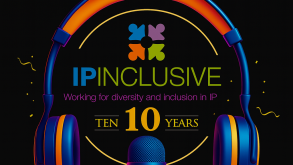Automobiles are many things to many people. At their heart, they’re a core mode of transportation that ferry passengers to and from places, including cities, states, countries, and even continents, providing a sense of identity for some and essential utility function for others.
In this way, cars and other automobiles have become vital to modern life – and as a result of new innovation, they’re becoming even more integral.
Automobiles have become more than just a mode of transportation; they have integrated themselves with our digital lives and automated everyday functions. Technological advancements that once seemed largely theoretical to much of the public more than a decade ago have quickly become a reality.
In a previous article, we examined various IP challenges confronting automotive companies related to patenting AI-related inventions, including patent eligibility, inventorship, and trade secrets.
In this article, we consider advancements in automotive technologies, both from patent filings and from the perspective of historical litigation trends in emerging technologies, touching on aspects of autonomous vehicles, connected vehicles, and design patents.
A wave of technological innovation has pushed the IP footprint of car manufacturers beyond the basics of automotive design and into realms that had previously been recognised as high tech.
But history has shown that the potential for litigation increases as companies stake positions on innovation, market share, and differentiation from competitors in fast-growing tech – as evidenced by the advent of the electric light, heavier-than-air flight, and the so-called smartphone wars.
In recent years, there has been a marked increase in patent filings surrounding autonomous vehicles, AI, and connected automobiles, which may signal the potential for increased litigation as these technologies integrate into the marketplace.
As technology becomes more integrated and continues to cross industry boundaries, automobile companies will need to grapple with standard essential patents (SEPs), which have seen historically increased litigation for cellular, smartphone, and computer manufacturers, and less so for automotive companies.
In addition, trends in obtaining design patents to protect designs of replacement parts may offer additional avenues for automotive companies to prevent counterfeit products, allowing them to strengthen brand images, ensure quality of parts, and maintain safety standards.
A recent federal appeals court’s decision upholding the use of design patents for replacement parts has brought increased attention to the potential that design patents may offer.
Expanding tech
It’s no secret that automotive firms are developing technologies at an incredible pace and investing significant resources to do so.
Patent applications filed for autonomous vehicles and connected automobiles continue to rise globally and are among the fastest growing technologies in the automotive industry.
Notwithstanding core technologies in driving operations, increased connectivity and user experiences –such as infotainment systems, 5G integration, and other traditionally non-automotive technologies – are now integrated throughout the industry.
The recent increases in patent filings for autonomous vehicle patents will affect both passenger cars with self-driving modes and fully autonomous vehicles, such as autonomous ride sharing and taxi services.
Late-stage testing deployments and early rider programmes are already bringing such technology into the mainstream of public life. For example, artificial intelligence is now a driving force behind autonomous vehicle development and is one of the fastest growing segments in the automotive industry and patent filings.
While the continued growth and technological development of driverless vehicles is seen as a positive advancement in the consumer driving experience, it also raises issues related to SEPs and, in particular, 5G.
One benefit of SEPs is the potential for simplifying licensing when declared and licensed under the standards setting bodies’ policies.
An IPlytics study in January 2020 determined that more than 95,000 patents were declared standard essential with respect to 5G.
Of those, nearly a quarter of the patent families declared were also declared essential to previous 2G, 3G, or 4G standards.
Some patent owners not subject to SEP declarations have tried to enforce patents they believed were essential to standards as technologies came to market. Such litigations surrounded 802.11 Wi-Fi standards, 3G, and LTE in the late 1990s and 2000s.
Recently, although not specifically targeted at 5G technology, Conversant sued Tesla over Tesla’s integration of 3GPP and 4G/LTE standards at the District Court for the Western District of Texas.
This case was dismissed in December 2020, but may signal the potential for litigation surrounding SEPs and automotive companies in the future.
SEPs may also become important to bring autonomous vehicles into the mainstream, not just to communicate over mobile networks, but also with vehicle manufacturers to ensure that autonomous vehicles form a cohesive ecosystem.
Outside automotive
As automobiles become more connected, they may also become more reliant on traditionally non-automotive providers’ technology to be free of IP issues.
One example is the integration of infotainment systems that are compatible with other electronic devices. Patent plaintiffs do not always allege infringement of the source of technology but can assert their patents against the ultimate consumer product.
For example, since 2011, more than 40 district court patent infringement complaints have specifically alleged infringement related to automobile infotainment systems, such as Bluetooth or supplier software, that may not have been developed by the automobile manufacturer. Nearly half of those cases were filed in 2020 or 2021.
High tech companies in the consumer electronics space are now moving into the automotive space and developing patent portfolios on various technologies used in cars and trucks. IP litigation in consumer electronics may, therefore, bleed into the automotive realm.
Historically, patent litigation has increased after periods of intense technological innovation, and could be perceived as a marker for competitive innovation.
Some of the earliest ground-breaking technologies were met with high-profile IP litigation. For example, the commercially viable electric lightbulb was litigated between Edison and Westinghouse in a bid to garner the emerging electric light industry and to determine not just market shares, but whether the nation would adopt alternating current or direct current technologies.
Heavier-than-air flight also saw an IP war between the Wright Brothers and Glenn Curtiss in the budding aviation industry. The rise of smartphones led to heavy litigation in the smartphone wars.
Given the potential of autonomous vehicles, AI integration, and other rapidly growing automotive technologies, history suggests that increased litigation may be on the horizon.
While automotive industry players may not want to relive the smartphone wars in competitor suits, future litigation risks may not come from traditional automotive competitors.
Instead, they may begin in non-automotive fields, including AI, SEPs related to 5G, and electrical infrastructure.
RPX recently published a study finding a 182% rise in automotive patent litigations filed by non-practising entities (NPEs) between Q3 2020 and Q3 2021.
Although many other industries also saw rises in NPE litigation, the rise in automotive was the largest of any sector analyzed in the study.
This rise correlates with a general uptick in litigations since 2018, but it is worth noting that the period between 2010 and 2015 also marked the high point in litigations filed against automotive entities, according to LegalMetric data.
Government gears
Although patent litigation is driven by many factors within the market, external factors, such as governmental decisions, may shape the market and the development of technologies.
For example, California recently set a goal to have all light-duty autonomous vehicle sales be zero-emission vehicles by 2030, and all personal automotive sales be electric vehicles (EVs) by 2035.
Several countries and governments outside of the US have also set or proposed goals for increasing electric vehicle sales and setting standards for autonomous vehicle safety guidelines.
Such directives, if held to, may direct innovation, including patent filings and litigations.
They also require future investments in infrastructure and may result in a greater demand for certain types of vehicles in the market.
As such, EV charging infrastructure, fuel cell technology, and EV technology – already near the forefront of patent filings – may find itself as an emerging area of litigation as companies invest in these technologies to meet governmental and regulatory requirements.
Government directives may also have ripple effects in non-automotive utility industries that dovetail with automotive.
As the number of and need for electric charging stations increase, the power grid must bear the additional load, potentially crossing over into grid infrastructure patents.
A 2020 California Independent System Operator report noted that increased utility usage from high temperatures, resource adequacy, and planning processes were likely contributors of rolling blackouts.
Investments in electric vehicle technology may, therefore, touch not only on the technology of the charging stations themselves, but also the greater infrastructure supporting those technologies.
Design dilemmas
Design patents have become a strategically important IP asset for automobile makers to, among other things, prevent counterfeit parts and provide quality control over the design and appearance of their products, when utility patents or trade dress assertions may not be feasible.
Design patents allow automakers to protect non-functional elements of components and to bring suit against infringers who make, sell, or offer to sell a product using a protected design.
Design patent litigation concerning automobile parts has received increased attention in the courts during the past few years.
In two recent opinions, the Court of Appeals for the Federal Circuit held that design patents may protect designs for replacement automobile parts - see Ford v New World International from 2020 and Automotive Body Parts Association v Ford from 2019.
Design patents may be a generally defensive or protective area at this time, but the recent appeals court decisions could strengthen automotive manufacturers’ confidence in the importance of design patents in protecting their brands and consumer reputations.
Notably, one of the most watched patent litigations in recent history involved design patent assertions from Apple against Samsung covering the design of graphical user interfaces.
As automotive companies continue to integrate technologies and improve user experiences, many of which are driven by graphical user interfaces, including infotainment systems and the replacement of traditional, analog gauges with enhanced digital displays, design patent protection may further differentiate and provide protection for automotive manufacturers looking to provide unique and identifiable user experiences to consumers.
As time goes on in the fast-evolving automotive industry, advanced automotive technologies will continue to influence not only patent filings but also the potential for IP litigation.













